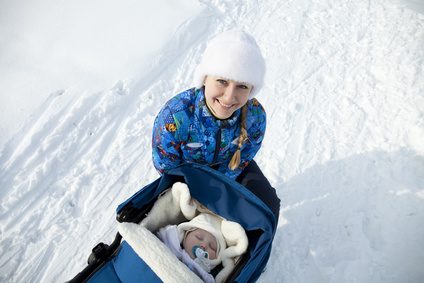How many parents would leave their babies to sleep outside in the cold? The answer will be none, right? Well for those that live outside Denmark, Finland, Norway and Sweden, the answer may very well be no way, but for most parents in those Nordic countries, the answer could not be a clearer yes to sub-zero temperatures sleep for babies.
In the winter months temperatures in the Nordic countries can be considerably low. Using Stockholm in Sweden as an example average, the lowest winter temperature is typically around -4°C (24F) [1]. Babies in these countries happily sleep outdoors in their prams outside cafés, on porches, in gardens and on balconies. Most impressively of all are the adapted barns/rooms at nursery, designed to allow the flow of cold air for babies and kids while they sleep. This practice has existed for decades.
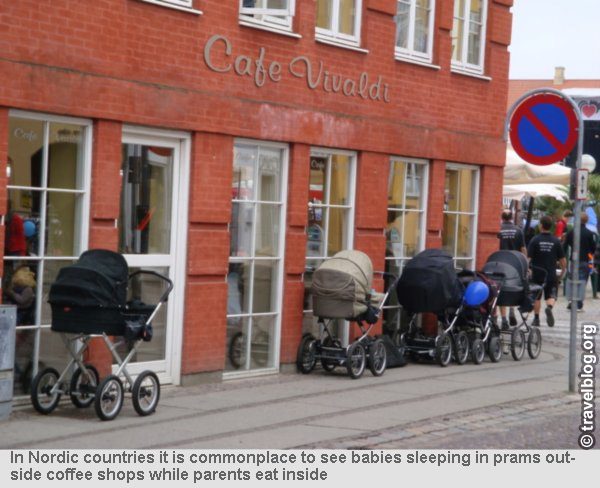
What is Sub-Zero Temperature Sleep?
Sub-zero temperature sleep is when parents or care-givers put their babies outdoors to sleep. The theory underlying this Nordic custom is that babies, who are exposed to fresh air, are less likely to be affected by colds and other illnesses.
The practice started in the 1940s when child mortality was high and air quality in the home was poor. It was thought that the sunshine and fresh air would prevent rickets and increase immunity against bacteria [2].
Supporting this notion is anecdotal evidence from parents who believe that their babies sleep better and longer when they are outside. So much so, that it is very commonplace for parents to leave babies in prams or strollers outside cafés in the snow and the cold while they go in for a coffee. This is a cultural norm.
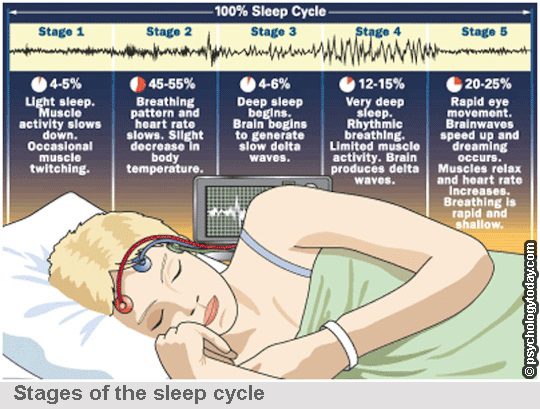
What do we know about sleep?
So, we spend about eight hours a day, 56 hours a week, 240 hours a month and 2,920 hours a year sleeping. Sleep is a pivotal process that occupies almost one third of humans’ lives [3]. It is important for physical health, learning and memory, and emotional stability [4].
Whilst it may appear that nothing is happening inside your head, your brain is very active. With the use of a machine called an electroencephalograph, an encephalogram (EEG) showing brain activity (the wavy lines on the EEG are known as “brain waves”) is produced giving insights into what happens when we sleep.
There are two basic forms of sleep: Rapid Eye Movement (REM) sleep and Non-Rapid Eye Movement (NREM) sleep [5–6]. Each form is characterised by a different type of brain wave activity. NREM sleep is the first step, followed by a shorter period of REM sleep, and then the cycle starts over again. There are three stages of NREM sleep and each stage can last from five to 15 minutes. You go through all three stages before reaching REM sleep:
- Stage 1: Your eyes are closed, but it’s easy to wake you up. This phase may last for five to ten minutes.
- Stage 2: You are in a light sleep, the heart rate slows and your body temperature drops. At this stage your body is getting ready for deep sleep.
- Stages 3: This is the deep sleep stage. It’s harder to wake you up during this stage and if someone did, you would feel disoriented for a few minutes. In this deep stage of NREM sleep the body repairs and regrows tissues, builds bone and muscle and strengthens the immune system.
In REM sleep your eyes move quickly in different directions, dreams normally occur during this time, sometimes you can have intense dreams during REM sleep, since your brain is more active. Normally, REM sleep happens 90 minutes after you fall asleep: the first period lasts for around ten minutes, each of your later REM stages gets longer, and the final one may last up to an hour. Your heart rate and breathing increase. Waking up after a full night’s rest is normally from REM sleep.
Overall babies spend about 50% of their sleep time in REM sleep and 50% in NREM. Adults spend about 20% of their sleep time in REM and 80% in NREM sleep. Elderly people spend less than 15% of their sleep time in REM sleep.
Are there any benefits of cold weather sleeping for babies?
Quantifying the health benefits of sub-zero temperature sleep for babies is difficult: research in this area is in its early infancy. For the general population there are some surprising health benefits to cold weather; such as calorie burning, bringing loved ones close to each other for warmth, stamping out disease-carrying bugs or viruses, appreciation of good weather, potential reduction with inflammation, and an escape from the pressures to get a bikini body [7]. From what is known, babies have the following benefits:
- Acclimatising babies to the cold weather by exposing them to the “fresh air” as soon as possible.
- Babies and kids appear healthier from the fresh air.
- Disease control, especially as the fresher air limits the likelihood of picking up bugs, colds, infectious germs, etc. from others due to less exposure.
- Parents report that their babies sleep for longer outdoors than indoors.
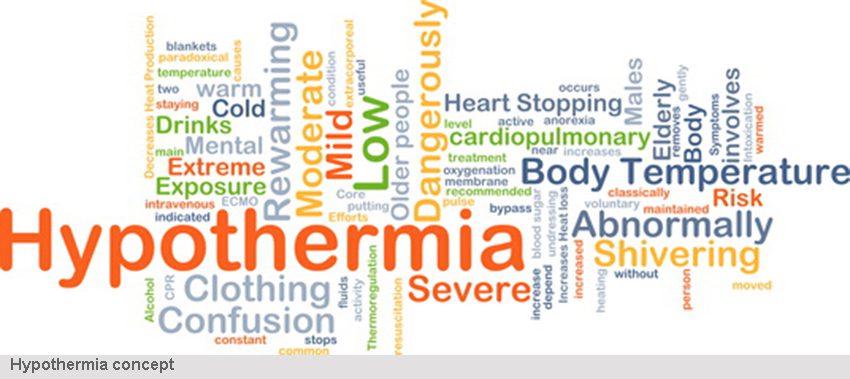
What in general are the potential issues with cold weather exposure?
Prolonged exposure to severe cold is not advisable, adverse health effects from exposure to the cold varies from person to person and the conditions can also vary [8–9]. Aside from the normal colds, flus, sore throats, potential conditions resulting from sub-zero temperature naps for babies can include:
- Hypothermia – develops when a child’s temperature falls below normal due to exposure to colder temperatures. In cases of babies and children it can happen when they are playing outdoors in extremely cold weather without wearing proper clothing or when clothes get wet. The onset of hypothermia can happen more quickly in children than in adults [10].
- Frostbite – happens when the skin and outer tissues become frozen. This condition tends to happen on extremities like the fingers, toes, ears and nose [10].
- Frostnip – usually affects skin on the face, ears, or fingertips. It may cause numbness or blue-white skin colour for a short time, but normal feeling and colour return quickly when you get warm. The good news is that no permanent tissue damage occurs [11].
- Asthma – cold air has been found to be a major trigger of asthma symptoms such as wheezing and shortness of breath [12].
- Dry skin – when the humidity is low dry skin is a common condition that can occur and is often worse during the winter, particularly for those with eczema [12].
Why then would I be interested in putting my baby outdoors in the cold to sleep?
Considering babies sleep for approximately 14 months out of their first 24 months of life [13], any help a parent can get to develop their growth is a positive thing. Children’s sleep durations are steadily declining [14], and paediatric sleep problems are persistent [15–23] despite the critical role that sleep plays in children’s development and daily functioning. 20 to 30% of children experience clinically significant sleep problems [15], and approximately 70% of children experience at least one sleep-related problem a few nights a week [24].
Parents who undertake the practice of sub-zero temperature sleep report their babies sleeping for longer in the fresh air. Overall there are many factors, such as health states, emotional states, bedding conditions and thermal environments which affect sleep quality. Thermal environment has been found to be the most important factor [25–26]. Okamoto-Mizuno and his team [26] found;
- The effects of heat or cold exposure increases wakefulness and decreased rapid eye movement sleep.
- In semi-nude subjects, sleep stages were more affected by cold exposure than heat exposure.
- In situations where bedding and clothing are used, heat exposure increases wakefulness and decreases the rapid eye movement sleep.
- Humid heat exposure further increases thermal load during sleep and affects sleep stages and thermoregulation, the process that allows the human body to maintain its core temperature.
- Cold exposure was found to not affect sleep stages, though the use of bedding and clothing during sleep is critical in supporting thermoregulation and sleep in cold weather.
This finding explains what the Nordic parents and care providers report when they say their babies sleep for longer and feel refreshed in the cold.
Is there any evidence to support Sub-Zero Temperature Sleep apart from general sleep studies?
A study conducted in Finland by Tourula and team [27], looked at parents’ opinions about their children sleeping outdoors during a Finnish winter. Overall the researchers said that parents expressed subjective and mainly positive experiences and that most had not faced potentially dangerous situations.
- The practice usually began when the child was two weeks old, and was carried out once a day.
- Children took longer naps outdoors compared with naps taken indoors. On average, if a child would sleep for between one and two hours indoors, their sleep outdoors could last from one and a half to three hours. Outdoor temperatures varied from parent to parent but typically would range from between -27°C and +5°C.
- Some parents reported that their children’s fingers felt cold in 3% of the children sleeping in 0°C temperatures and in 25% sleeping in -15°C temperatures.
- Almost half of the children had sweaty necks at 0°C, but the most frequent symptoms were red cheeks and cold nose tips.
Research being conducted by Prosser Hannu Rintamaki at the Finnish Institute of Occupational Health also supports the evidence that babies do sleep for longer [2]. Prof Hannu Rintamaki had this to say on the matter:
Babies sleep much better in the cold than in the warm environment. The sleeping time is 2.3 times longer usually in the cold. But the thermal insulations should be optimal, the baby should not be overheated or either cooled down.
Further results from Prosser Hannu Rintamaki’s research showed that parents felt their children were more active and also ate better after sleeping outside. With over 94% of those surveyed saying that the fresh air was good for their child’s health [2].
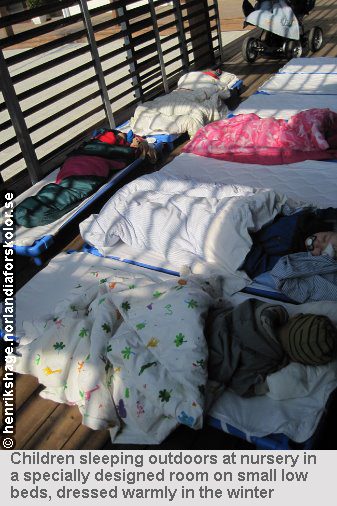
Are there any anecdotal or studies against Sub-Zero Temperatures Sleeping for babies?
There is no real evidence against the practice of sub-zero temperature sleep for babies, with most studies showing little-to-no difference. However, Margareta Blennow, a paediatrician in Sweden with an interest in this topic, says that reports gathered from Sweden’s Environmental Protection Agency showed that some pre-schoolers who spent a lot of time outdoors were more likely to miss a few days of school because of sickness:
Some studies show that pre-schoolers who spent several hours in the open, not just sleeping, miss[ing] fewer days of kindergarten than those who spend more time indoors. But other studies have found a difference.
Svante Norgren, yet another paediatrician who also happens to be the director at the Astrid Lindgren Children’s Hospital in Stockholm, Sweden, said precautions must be taken by making sure that children are dressed appropriately. He also offered advice to parents for babies less than two weeks old, that below zero the babies should not be placed outdoors to sleep:
We have had new-borns admitted to the ER with hypothermia.
How to keep babies warm when they sleep in Sub-Zero Temperatures
The benefits of sub-zero napping begin to outweigh the preliminary fears of putting your child outside to sleep, and there is some advice on how you can keep your babies safe and warm [28], after all, according to those in Nordic countries there is no bad weather, only bad clothing.
- If it’s colder than -10 degrees keep baby indoors
- Use layers when it comes to dressing babies for a nap in the cold, the gaps between the layers warm up to protect against the cold.
- Babies and children lose heat quicker than adults, so appropriate protection of their heads, hands and feet should is needed. Wool is often a good product to use as it offers good body insulation. Cotton should be avoided as it’s very porous and generally holds more moisture which doesn’t wick away easily.
- Under layers should be used, once again wool offers the best protection as it keeps the heat close to the skin.
- Wool outer layers are often used by Nordic countries (i.e. thick knitted all-in-one suits)
- When the weather is severe a good outdoor sleeping bag is essential.
- A warm blanket to lay on top.
- A portable baby monitor is necessary so you can hear if baby wakes up.
All sensible parents and carers in Scandinavia engaging in sub-zero temperature baby sleep bring the children indoors when the weather drops to -10°C. But there are the hardened minority that will keep children out to -20°C, as indicated by the head teacher at a Stockholm centre, Brittmarie Carlzon, when interviewed by the BBC [29]:
When the temperature drops to -15°C (5F) we always cover the prams with blankets.
More advice was offered by Jarnstrom Martin, who is head of a group of nurseries in Sweden. She is a massive supporter of sleeping outdoors, however she stresses the importance of keeping the baby warm when the weather is cold.
It is very important for babies to have wool close to the body, warm clothes and a warm sleeping bag.
Patricia Clayhills-Siljama, a Health Visitor at the Helsinki Public Health Services offers some advice on how to integrate babies to the practice of sub-zero temperature sleep [2]:
If it is a winter baby it might be a good idea to take the baby out for just 10, 15, 30 minutes to start with. And of course you also have to use [the] common sense and see what kind of weather it is and some kind of line is -10°C, so over that it might not be such a good idea to take the babies out for longer
Concluding Remarks
While the scientific evidence is not conclusive as to the benefits of the sub-zero temperature sleep for babies, there is also no real evidence against it, with researchers and health professionals advising parents to apply common sense. Provided the advice on keeping babies warm while they sleep outside is followed, then the correct thermal environment can be created, allowing the baby sleep peacefully!
Sources
- [1] World Weather Online. Stockholm (Sweden) Monthly Climate Average. [Accessed 8 May 2016]
- [2] Salonen, I. The benefits of letting babies sleep in sub-zero temperatures, BBC.[Accessed 8 May 2016]
- [3] Lan, L. & Lian, Z, (2016) “Ten questions concerning thermal environment and sleep quality”, Building and Environment, Volume 99, 252-259.
- [4] Rechtschaffen, A, (1998) “Current Perspectives on the Function of Sleep”, Perspectives in Biology and Medicine, Volume 41, 359-390.
- [5] Carskadon, M. A. & Dement, W. C,(2011) “Chapter 2 – Normal Human Sleep: An Overview”, Principles and Practice of Sleep Medicine, Fifth Edition, (Philadelphia, PA W.B. Saunders) 16-26
- [6] G.J. Stephanie & M.B. Ruth (2012) “Chapter 13 Sleep and Biological Rhythms, Handbook of Psychology, Behavioral Neuroscience. (Somerset, NJ: Wiley Publish) 365-394
- [7] Klein, S. 23 (January 2013) “6 Surprising Health Benefits Of Cold Weather“. The Huffington Post.
- [8] World Health Organization. Adverse Health Effects of Exposure to Cold.
- [9] Harvard Health Publications. (1 December 2014). How does cold weather affect your health?.
- [10] Healthychildren.org. (1 January 2016) Winter Safety Tips.
- [11] Webmd. Cold Temperature Exposure Guide.
- [12] NHS UK. 10 Winter Illnesses.
- [13] Dahl, R. E. 1996. The regulation of sleep and arousal: Development and psychopathology. Development and Psychopathology, 8, 3-27.
- [14] Dollman, J., Ridley, K., Olds, T. & Lowe, E. 2007. Trends in the duration of school-day sleep among 10- to 15-year-old South Australians between 1985 and 2004. Acta Paediatrica, 96, 1011-1014.
- [15] Owens, J. A. & Mindell, J. A. 2011. Pediatric Insomnia. Pediatric Clinics of North America, 58, 555-569.
- [16] Salonen, A. H., Kaunonen, M., Åstedt-Kurki, P., Järvenpää, A.-L. & Tarkka, M.-T. 2008. Development of an internet-based intervention for parents of infants. Journal of Advanced Nursing, 64, 60-72.
- [17] Sadeh, A. & Anders, T. F. 1993. Infant sleep problems: Origins, assessment, interventions. Infant Mental Health Journal, 14, 17-34.
- [18] Morrell, J. M. B. 1999. The Role of Maternal Cognitions in Infant Sleep Problems as Assessed by a New Instrument, the Maternal Cognitions about Infant Sleep Questionnaire. Journal of Child Psychology and Psychiatry, 40, 247-258.
- [19] Martin, J., Hiscock, H., Hardy, P., Davey, B. & Wake, M. 2007. Adverse Associations of Infant and Child Sleep Problems and Parent Health: An Australian Population Study. Pediatrics, 119, 947-955.
- [20] Thunström, M. 1999. Severe sleep problems among infants in a normal population in Sweden: prevalence, severity and correlates. Acta Pædiatrica, 88, 1356-1363.
- [21] Wake, M., Morton-Allen, E., Poulakis, Z., Hiscock, H., Gallagher, S. & Oberklaid, F. 2006. Prevalence, Stability, and Outcomes of Cry-Fuss and Sleep Problems in the First 2 Years of Life: Prospective Community-Based Study. Pediatrics, 117, 836-842.
- [22] Lam, P., Hiscock, H. & Wake, M. 2003. Outcomes of Infant Sleep Problems: A Longitudinal Study of Sleep, Behavior, and Maternal Well-Being. Pediatrics, 111, 203-207.
- [23] Bayer, J. K., Hiscock, H., Hampton, A. & Wake, M. 2007. Sleep problems in young infants and maternal mental and physical health. Journal of Paediatrics and Child Health, 43, 66-73.
- [24] National Sleep Foundation. 2004. Sleep in America poll. WB&A Market Reserach.
- [25] Zhang, B. & Wing, Y. K. Sex differences in insomnia: a meta-analysis.
- [26] Okamoto-Mizuno, K. & Mizuno, K. 2012. Effects of thermal environment on sleep and circadian rhythm. Journal of physiological anthropology, 31, 1-9.
- [27] Tourula, M., Isola, A. & Hassi, J. 2008 Children sleeping outdoors in winter: parents’ experiences of a culturally bound childcare practice. International Journal of Circumpolar Health, 67, 10.
- [28] A New Life In Norway. 26 February 2013. Keeping Babies Warm When They Nap In Sub-Zero Temperatures.
- [29] Lee, H. 22 February 2013. The babies who nap in sub-zero temperatures. BBC News.


